The Neighborhood Gardener – April

Happy Gardening!
Biopesticides: Horticultural Oils
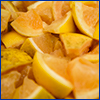 Growing interest in organic gardening, coupled with risks associated with traditional synthetic products, has increased attention to natural products that can manage landscape and garden pests. Plant- and petroleum-derived oils are one group of natural pest control products that can be successfully used in your garden. They're typically used to target soft-bodied pests like caterpillars or aphids. We go through the options, how they're used, and what to watch out for. More
Growing interest in organic gardening, coupled with risks associated with traditional synthetic products, has increased attention to natural products that can manage landscape and garden pests. Plant- and petroleum-derived oils are one group of natural pest control products that can be successfully used in your garden. They're typically used to target soft-bodied pests like caterpillars or aphids. We go through the options, how they're used, and what to watch out for. More
Epcot Flower and Garden Festival
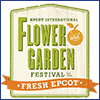 Spring is in full swing and the Epcot International Flower and Garden Festival blooms on. Running now through May 29th, the festival features fun Disney-themed topiaries, gorgeous gardens, and special events in the Festival Center on Fridays, Saturdays, and Sundays, including instructional seminars from University of Florida experts. Visit the Epcot International Flower and Garden Festival website.
Spring is in full swing and the Epcot International Flower and Garden Festival blooms on. Running now through May 29th, the festival features fun Disney-themed topiaries, gorgeous gardens, and special events in the Festival Center on Fridays, Saturdays, and Sundays, including instructional seminars from University of Florida experts. Visit the Epcot International Flower and Garden Festival website.
Wendy's Wanderings
 My grandmother always made sure she had her trusty Farmers' Almanac close at hand whenever she was making any gardening decision. To make their forecasts, the authors of the Farmers' Almanac claim to use a "secret formula that is locked in a black box." I prefer to use more updated forecast projections that are based on transparent science by meteorologists, and I would encourage you to do the same. More
My grandmother always made sure she had her trusty Farmers' Almanac close at hand whenever she was making any gardening decision. To make their forecasts, the authors of the Farmers' Almanac claim to use a "secret formula that is locked in a black box." I prefer to use more updated forecast projections that are based on transparent science by meteorologists, and I would encourage you to do the same. More
Plant of the Month: Cherry Tomatoes
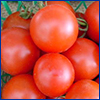 Cherry tomatoes are ideal for the hot and steamy Florida garden. While large tomatoes have a brief planting season here, cherry tomatoes can provide you with fruit throughout the heat of summer. Cherry tomatoes have the same growing requirements as their larger cousins: four to six hours of sunlight per day, regular fertilization, and one to two inches of water a week. There are quite a few varieties which grow well in Florida gardens including 'BHN 268', 'Black Cherry', 'Yellow Pear', and 'Sun Gold' to name a few. More
Cherry tomatoes are ideal for the hot and steamy Florida garden. While large tomatoes have a brief planting season here, cherry tomatoes can provide you with fruit throughout the heat of summer. Cherry tomatoes have the same growing requirements as their larger cousins: four to six hours of sunlight per day, regular fertilization, and one to two inches of water a week. There are quite a few varieties which grow well in Florida gardens including 'BHN 268', 'Black Cherry', 'Yellow Pear', and 'Sun Gold' to name a few. More
Cloudless Sulphur Butterfly
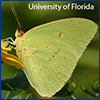 A pretty butterfly with an odd name, the cloudless sulphur is one of Florida's most common. These small yellow butterflies have long tongues, perfect for sipping nectar from the tubular flowers of plants like scarlet creeper and scarlet sage. Cloudless sulphur caterpillars are usually green with yellow and blue markings; their host plants include several "sensitive plant" species and shrubs in the Senna group, such as candlestick plant. More
A pretty butterfly with an odd name, the cloudless sulphur is one of Florida's most common. These small yellow butterflies have long tongues, perfect for sipping nectar from the tubular flowers of plants like scarlet creeper and scarlet sage. Cloudless sulphur caterpillars are usually green with yellow and blue markings; their host plants include several "sensitive plant" species and shrubs in the Senna group, such as candlestick plant. More
Grow Your Own Dyes
 Growing plants that can be used for the ancient art of creating natural dyes at home is suddenly trending again. For thousands of years, people have looked to plants for color: for clothing, art materials, and more. Luckily, Florida gardeners have a number of colorful options for providing dye-making materials that can also add beauty and even food to the landscape. Of course, many plants can be used to make green dye, but there's much more color in the garden. More
Growing plants that can be used for the ancient art of creating natural dyes at home is suddenly trending again. For thousands of years, people have looked to plants for color: for clothing, art materials, and more. Luckily, Florida gardeners have a number of colorful options for providing dye-making materials that can also add beauty and even food to the landscape. Of course, many plants can be used to make green dye, but there's much more color in the garden. More
April in Your Garden
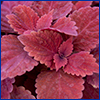 April is a great time to plant heat-tolerant annuals like coleus and bulbs like cannas. This is also a good time to divide large clumps of ornamental grasses and bulbing plants. Edibles that can be planted throughout the state this month include sweet potatoes, southern peas, and beans (bush, pole, and lima).
April is a great time to plant heat-tolerant annuals like coleus and bulbs like cannas. This is also a good time to divide large clumps of ornamental grasses and bulbing plants. Edibles that can be planted throughout the state this month include sweet potatoes, southern peas, and beans (bush, pole, and lima).
For more month-by-month gardening tips, check out the Florida Gardening Calendar. Three different editions of the calendar provide specific tips for each of Florida's gardening regions—North, Central, and South.
What's Going On?
If your Master Gardener program or Extension office is having an event, be sure to share it with us.

